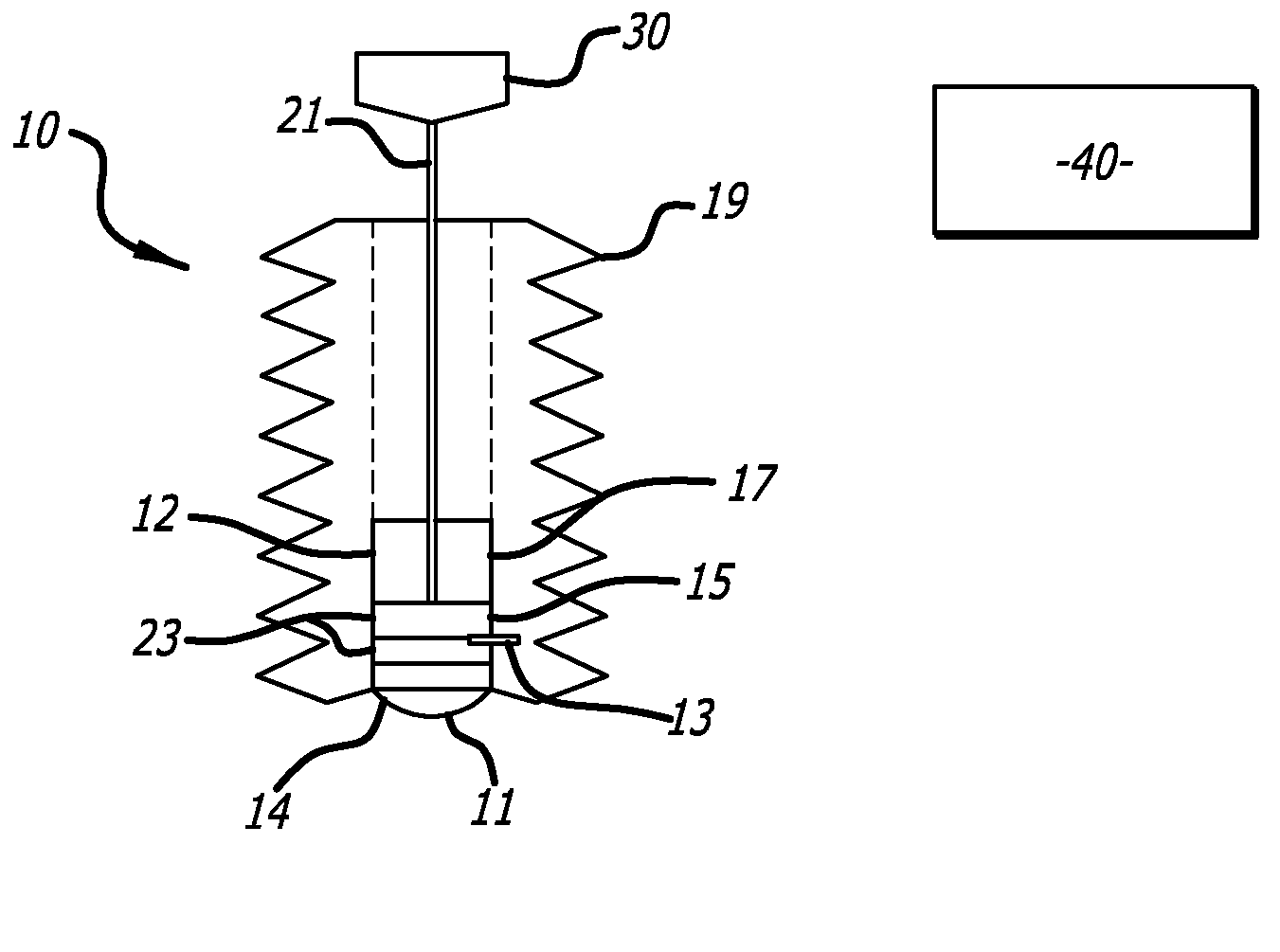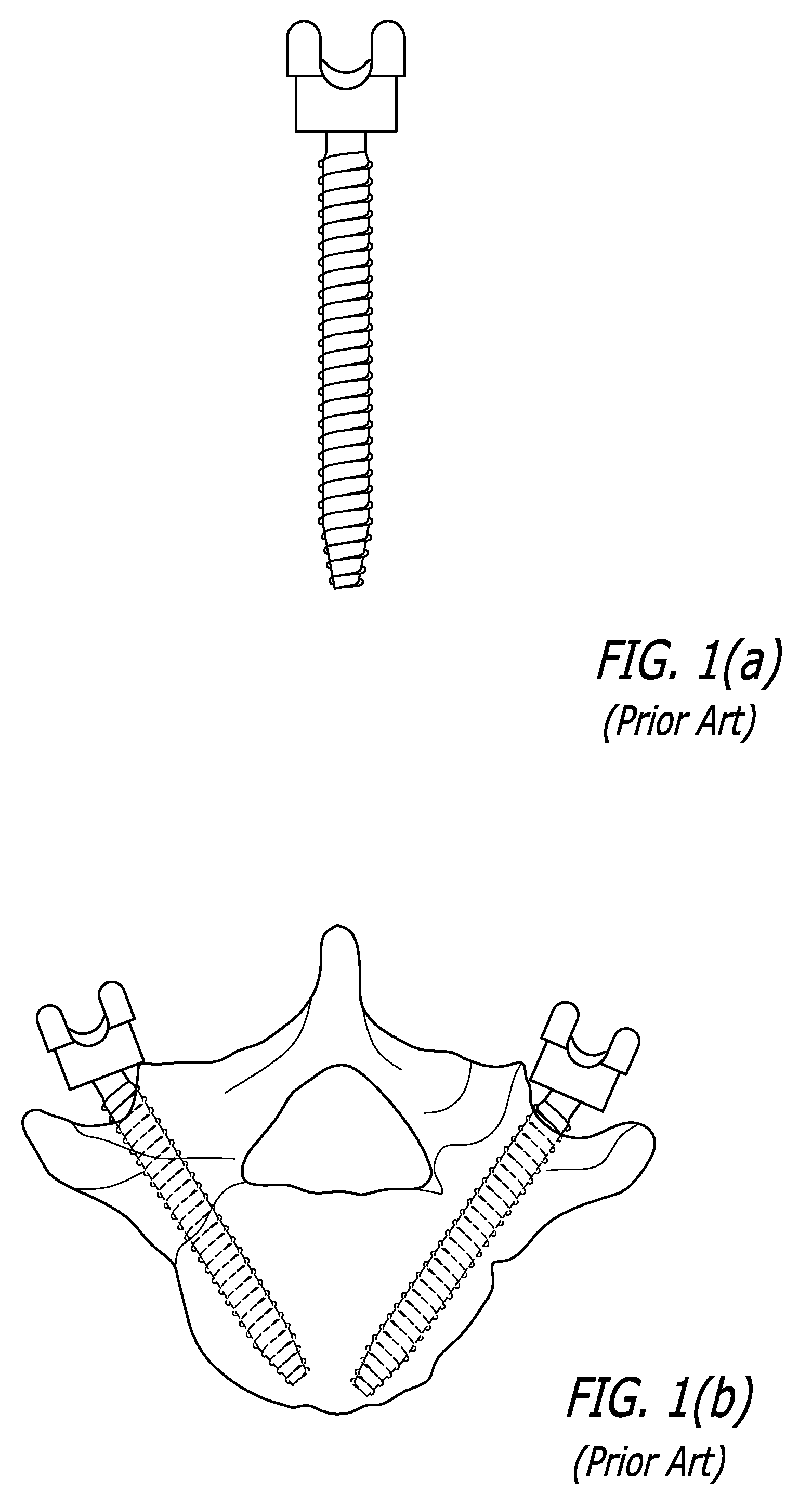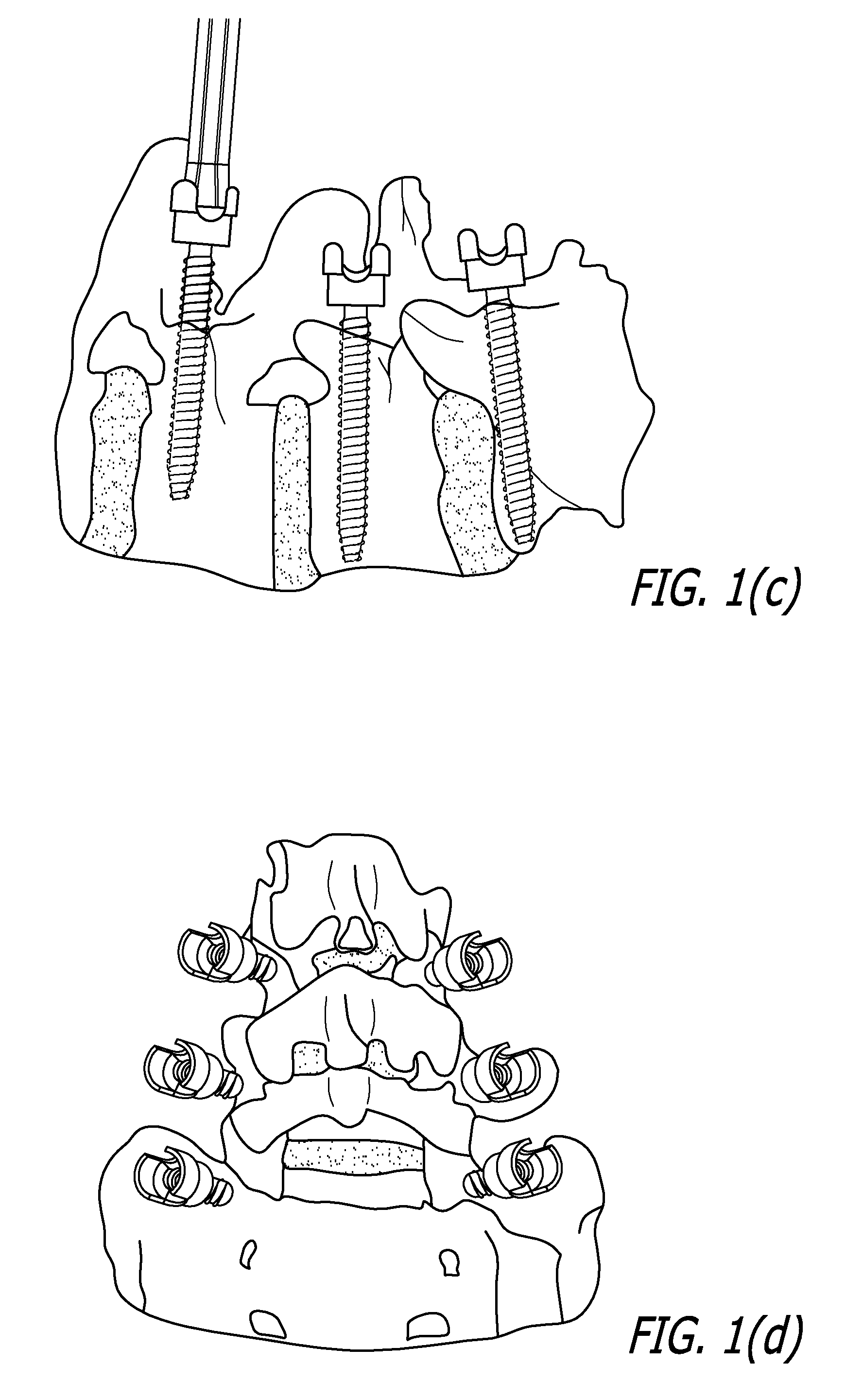Acoustic Back-Scattering Sensing Screw for Preventing Spine Surgery Complications
a technology of acoustic back scattering and sensing screw, which is applied in the field of placement and positioning of implanted instruments, can solve the problems of spinal nerve roots injury, deformation and fracture of pedicles, and current transpedicular screw fixation techniques that may have drawbacks,
- Summary
- Abstract
- Description
- Claims
- Application Information
AI Technical Summary
Benefits of technology
Problems solved by technology
Method used
Image
Examples
Embodiment Construction
[0028]The drawings disclose illustrative embodiments. They do not set forth all embodiments. Other embodiments may be used in addition or instead. Details that may be apparent or unnecessary may be omitted to save space or for more effective illustration. Conversely, some embodiments may be practiced without all of the details that are disclosed. When the same numeral appears in different drawings, it is intended to refer to the same or like components or steps.
[0029]FIGS. 1(a)-(d) illustrate a method of spine stabilization with transpedicular screws using the Protext Stabilization System (Globus Medical, Phoenixville, Pa.). The pedicle screws are typically of 5.0-9.0 mm in diameter and have lengths of 30 mm to 65 mm. As shown, the screws inserted into the vertebral pedicles and may come in contact with the spinal cord.
[0030]FIG. 2 illustrates a transducing implantable medical device 1. The transducing implantable medical device 1, may comprise an implantable instrument 10, which ma...
PUM
 Login to View More
Login to View More Abstract
Description
Claims
Application Information
 Login to View More
Login to View More - R&D
- Intellectual Property
- Life Sciences
- Materials
- Tech Scout
- Unparalleled Data Quality
- Higher Quality Content
- 60% Fewer Hallucinations
Browse by: Latest US Patents, China's latest patents, Technical Efficacy Thesaurus, Application Domain, Technology Topic, Popular Technical Reports.
© 2025 PatSnap. All rights reserved.Legal|Privacy policy|Modern Slavery Act Transparency Statement|Sitemap|About US| Contact US: help@patsnap.com



